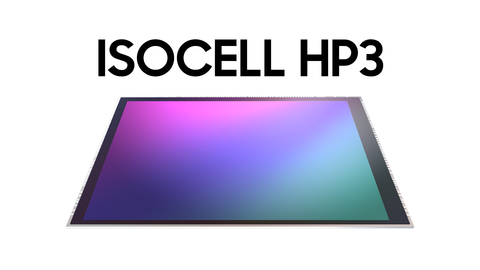New Samsung Sensor Enables Higher Res Images from Slimmer Mobile Phones
The new Samsung 200MP ISOCELL Image Sensor with industry’s smallest 0.56μm pixel size packs 200MP in the 1/1.4” optical format

SEOUL, South Korea—Imaging technologies for mobile phones and devices made a notable advance this week with Samsung Electronics Co. unveiling its new 200MP ISOCELL HP3 image sensor.
The new image sensor boasts the industry’s smallest 0.56-micrometer (μm)-pixels, which will allow manufacturers of mobile phones to continue to offer much higher resolutions for their mobile phones while reducing the camera module area by 20%.
The sensor is the company’s second 200MP sensor and its smallest.
“Samsung has continuously led the image sensor market trend through its technology leadership in high resolution sensors with the smallest pixels,” said JoonSeo Yim, executive vice president of sensor business team at Samsung Electronics. “With our latest and upgraded 0.56μm 200MP ISOCELL HP3, Samsung will push on to deliver epic resolutions beyond professional levels for smartphone camera users.”
Since its first 108MP image sensor roll-out in 2019, Samsung has been pushing forward with the development of next-generation, ultra-high-resolution camera technologies that offer improved imaging capabilities in smaller sizes for mobile phones.
The ISOCELL HP3, with a 12 percent smaller pixel size than the predecessor’s 0.64μm, packs 200 million pixels in a 1/1.4” optical format, which is the diameter of the area that is captured through the camera lens. This means that the ISOCELL HP3 can enable an approximately 20 percent reduction in camera module surface area, allowing smartphone manufacturers to keep their premium devices slim, Samsung said.
The ISOCELL HP3 comes with a Super QPD auto-focusing solution, meaning that all of the sensor’s pixels are equipped with auto-focusing capabilities. In addition, Super QPD uses a single lens over four-adjacent pixels to detect the phase differences in both horizontal and vertical directions. This paves way for a more accurate and quicker auto focusing for smartphone camera users.
Get the TV Tech Newsletter
The professional video industry's #1 source for news, trends and product and tech information. Sign up below.
The sensor also allows users to take videos in 8K at 30 frames-per-second (fps) or 4K at 120fps, with minimal loss in the field of view when taking 8K videos. Combined with the Super QPD solution, users can take movie-like cinematic footage with their mobile devices.
The ISOCELL HP3 also provides strong low-light capabilities, with the Tetra2pixel technology that combines four pixels into one to transform the 0.56μm 200MP sensor into a 1.12μm 50MP sensor, or a 12.5MP sensor with 2.24μm-pixels by combining 16 pixels into one. The technology enables the sensor to simulate a large-sized pixel sensor to take brighter and more vibrant shots even in dimmed environments, like in-doors or during nighttime, Samsung said.
To maximize the dynamic range of the mobile image sensor, the ISOCELL HP3 adopts an improved Smart-ISO Pro feature. The technology merges image information made from the two conversion gains of Low and High ISO mode to create HDR images. The upgraded version of the technology comes with a triple ISO mode – Low, Mid, and High – that further widens the sensor’s dynamic range. In addition, the improved Smart-ISO Pro enables the sensor to express images in over 4-trillion colors (14-bit color depth), 64 times more colors than the predecessor’s 68 billion (12-bit). Furthermore, by supporting staggered HDR along with Smart-ISO Pro, the ISOCELL HP3 can switch between the two solutions depending on the filming environment to produce high-quality HDR images, Samsung said.
Mass production is set to begin this year, Samsung said, which means the sensor won't be available in mobile phones until 2023.
George Winslow is the senior content producer for TV Tech. He has written about the television, media and technology industries for nearly 30 years for such publications as Broadcasting & Cable, Multichannel News and TV Tech. Over the years, he has edited a number of magazines, including Multichannel News International and World Screen, and moderated panels at such major industry events as NAB and MIP TV. He has published two books and dozens of encyclopedia articles on such subjects as the media, New York City history and economics.

